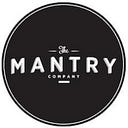I am a trained chef who has worked in Michelin star restaurants but I am currently trying to help someone learn to cook who knows nothing. I posted a thread to understand the mindset of a new chef. This response struck a chord with me:
“I need to be told exactly how long to cook something for because I have no idea if you don’t tell me.”
This is a big gap between experienced cooks and beginners, temperature control and “feel”, so I wanted to provide some pointers that helped me, maybe they can help you.
- WHEN IN DOUBT, OVEN AT 350 DEGREES — This is a safe roasting temperature, finishing meat and fish in the oven temperature, warming temperature ect. MOST OVENS aren’t exact so if it says 325 or 375 don’t fuss. If you really want to know the true temp of your oven double check with a second thermometer. Most restaurant ovens are just sitting at 350.
- 4 BASIC TEMPERATURES — For 95% of oven stuff I use the following temps: 350 for most things, Broil for caramelizing and getting deep color, 250 for braising and 200 for warming plates and bowls (you should heat plates and bowls to keep food hot). There are of course, outliers, like when you want to crisp the skin of roast chicken so you crank it to 400.
- NEVER WALK AWAY FROM BROILING. Broiling in a fancy restaurant is usually done with a “salamander” which broils inches from the surface of food at high temp. You can mimic this at home by moving your top oven rack to the highest setting and turning on broil. Walking away from toasting baguette or melting Gruyere on French Onion Soup or broiling anything is the fastest way to destroy dinner. Just stand there and watch, learn from observing the transformation, you can ruin a lot of work if you ignore something under a broiler.
- TIMER — Get a cheap kitchen timer or use your phone timer and use it. For high heat I might set a timer for 5 mins to check, for longer roasts ect. I might do 20 min intervals. The point is the timer is not just for when things are “done” it should be used as a reminder to check-in.
- STUDY YOUR STOVE — Understand your stovetop by cooking eggs. In fancy French restaurants a lot of kitchen try-outs used to be to just make an omelette because it showcases finesse. To get used to your stovetop cook scrambled eggs for a couple mornings at different settings of gas or electric and observe how it quickens cooking time. Another good way to practice is to add water to a pans and just play around with the settings. This is the “feel” aspect of cooking. Most people don’t know what setting on their stovetop generates what result, just pay attention and take note and I promise this will really help when you go to cook something over “Med-High Heat” or “High Heat”.
- MOST IMPORTANT — USE YOUR SENSES: Everyone’s oven and stovetop, pans and cookware are different. Temperature seems really concrete in recipes but there are huge gaps in variance based on different people’s kitchen. Learn to OBSERVE, don’t just rely on settings and times and you will be well on your way to becoming a much better cook.
